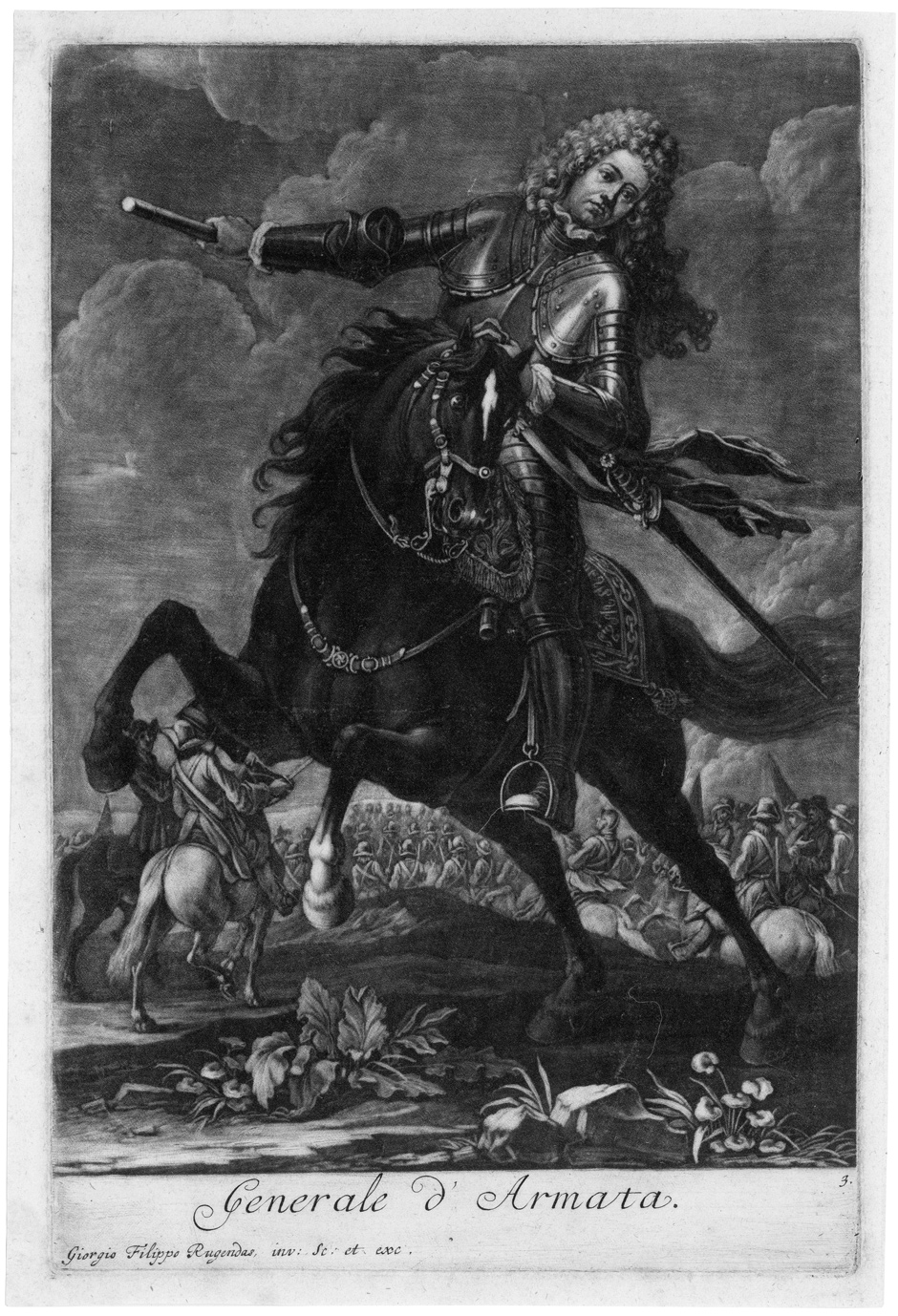Loading the page ...
Georg Philipp Rugendas the Elder
(1666–1742, Augsburg)
Chargen der Reiterei. Eight mezzotints. Each measuring approx. 25 x 16.1 cm. Circa 1700. Nagler 26; Heller-Andresen 7; Teuscher 37–44, each I (of III). Watermark: Coat of arms with Augsburg Beaker.
According to Füssli, the prints in this suite, justifiably described by Nagler as a “capital series”, were made in 1700. This makes them the first mezzotints by Georg Philipp Rugendas the Elder, which were issued moreover in his own publishing house in Augsburg. The title page bears a dedication to the mint engraver and medal maker, Johann Michael Hoffmann (ca. 1650–1736), who was active at the Imperial Court in Vienna from 1680. The inscription contains a grateful mention of the “molte Cortesie” (many favours) which the artist received from Hoffmann during his stay in Vienna from 1690 to 1692.
The spirited, keenly observed depictions of cavalrymen, including a general in cuirass, officers of different rank and ordinary cavalry soldiers, are based on the artist’s own inventions and highlight the stylistic élan and technical brilliance Rugendas brings to the military genre. The individual scenes combine an eye for picturesque detail with historical accuracy. Each protagonist is portrayed in a varied but characteristic pose and is equipped with the insignia of his military rank. The artist never lapses into cliché-like repetitions, however. His depictions appear so vital and true to life that one can only assume he must have been familiar with the smell of gunpowder on the battlefield from his own experience. The fine tonal gradations of the mezzotint technique prove a highly suitable medium with which to capture the flashing of the armour and the soft, gleaming coats of the horses in an evocative and visually highly effective manner.
It is certainly no exaggeration to say that Georg Philipp Rugendas the Elder was an exceptional figure in the Augsburg art scene of his time. He was introduced to engraving by his father at an early age and continued his artistic education during several trips abroad. After stays lasting several years in Italy and Vienna respectively, Rugendas returned to Augsburg in 1695, where he remained for the rest of his life. He began an illustrious career in his native city as a painter of battle scenes, was equally successful as an engraver and subsequently founded his own print publishing house, which was continued after his death by his sons, Georg Philipp the Younger and Christian. The present suite, which dates from the early days of the publishing house, is of great rarity. Superb, contrasting and uniform early impressions with thread margins, before the addresses of Christian Rugendas and the Klauber brothers respectively. Minor ageing, otherwise in perfect condition.
